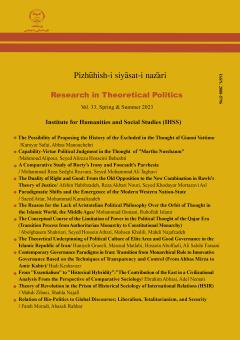The sphere of politics has long been defined based on a masculine approach and women have been neglected and have not been given a clear and prominent position in the politics. Even in the Western philosophy, which is known as a manifestation of rationalism, women are r
More
The sphere of politics has long been defined based on a masculine approach and women have been neglected and have not been given a clear and prominent position in the politics. Even in the Western philosophy, which is known as a manifestation of rationalism, women are recognized as the second sex, on the assumption that intelligence is a masculine character. Due to the fact that the status and position of women in the mirror of princes in different periods, is one of the ways that can clarify this status in different historical ages, in this article their rejection or acceptance by epistemological systems has been analyzed. What appears in the mirror of princes as prominent political texts in the Medieval is a depiction of a creature called woman who was nowhere present and, therefore, men have drawn their appearance as they liked. But the question is: what metaphors were in medieval the mirror of princes and historical texts that have reinforced the exclusion and marginalization of women? For this purpose, here the prepositions of the political texts and governance literature have been examined with the theoretical framework of metaphorical analysis and classification of metaphors into three titles: metaphor of creation, metaphor of governance and philosophical metaphor of masculine intellect. This article is based on a hypothesis in which women were excluded and confined to a private life for many years, and such metaphors have played a special and effective role in removing women from the political arena.
Manuscript profile


